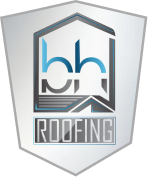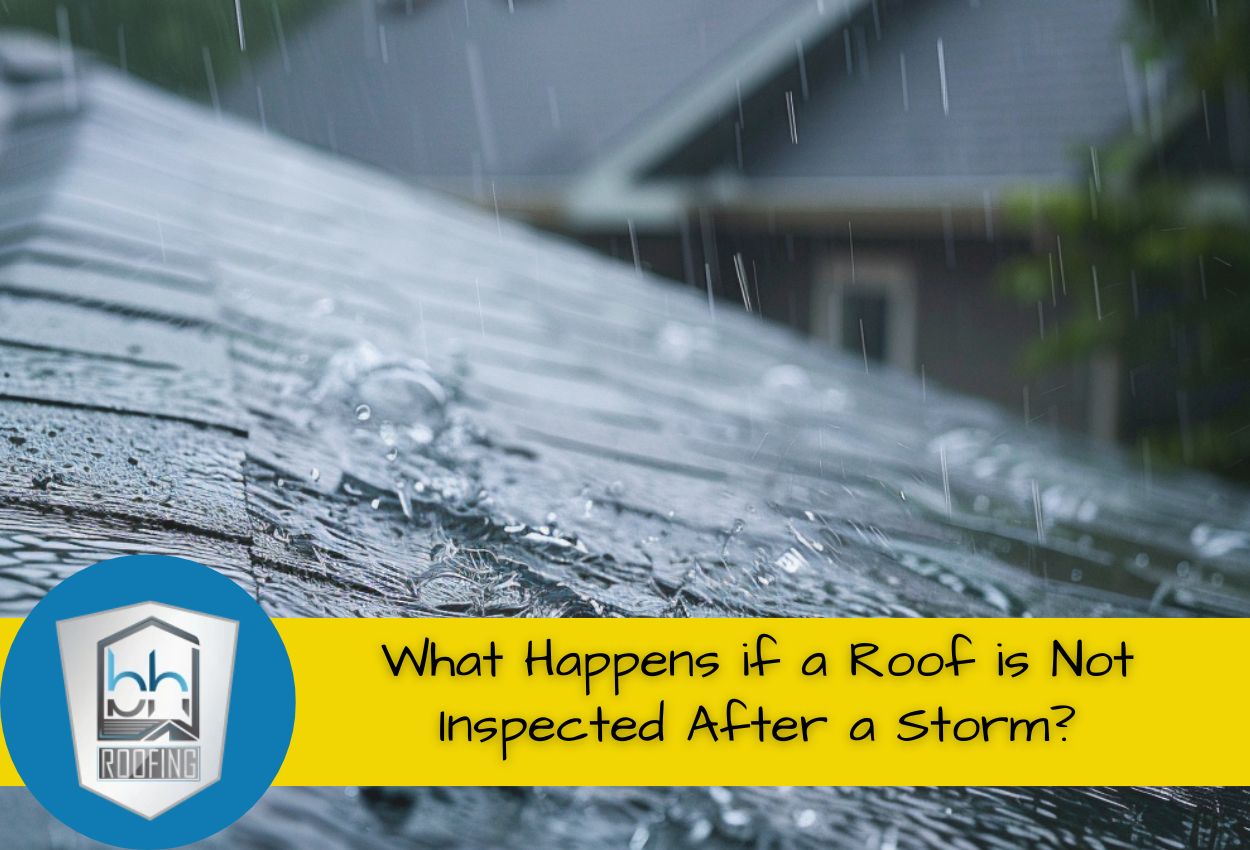When severe weather rolls through San Antonio, most homeowners check for obvious property damage, but many overlook one critical area: their roof. The consequences of neglecting a professional roof inspection after storms can be far more serious than most realize. Whether your property has endured hailstorms, high winds, or torrential downpours common to South Texas, damage isn’t always visible from the ground.
Storms can loosen shingles, create small punctures, or damage flashing without leaving obvious signs. These seemingly minor issues often worsen over time, leading to water intrusion, structural deterioration, and extensive repairs that could have been prevented. Even small undetected roof leaks after storms can cause significant interior damage, promote mold growth, and compromise your home’s structural integrity.
Perhaps most concerning for homeowners is the potential impact on insurance coverage. Many policies require prompt reporting of storm damage, meaning delayed roof repair consequences often include denied claims. When roof damage goes undocumented, homeowners frequently find themselves paying for repairs that might have been covered.
Understanding the hidden roof damage risks associated with skipping a professional assessment is essential for protecting your San Antonio home and family. A thorough storm damage roof inspection provides peace of mind and potentially saves thousands in preventable repairs.
Compromised Structural Integrity: Beyond Surface Damage
What many San Antonio homeowners don’t realize is that storm damage extends far beyond visible exterior issues. When your roof endures the impact of severe weather, the underlying structure can become compromised even when surface damage appears minimal. High winds can loosen fasteners, hail can create hidden fractures in decking, and heavy rain can seep into connection points — all weakening your roof’s structural foundation.
These compromised elements create a dangerous domino effect. As support beams absorb moisture, they begin to warp and rot. Roof decking, the flat surface beneath your shingles, can soften and deteriorate when exposed to prolonged moisture. Even the metal connectors holding your roof system together can corrode when water infiltrates these critical junction points.
The true danger lies in how this weakened structure responds to future weather events. A roof with compromised integrity is significantly more vulnerable to catastrophic failure during the next storm. What might have withstood normal seasonal weather now becomes susceptible to collapse under strong wind or heavy rain. Hidden roof damage risks multiply with each passing month, as structural components continue to degrade out of sight.
A professional storm damage roof inspection can spot these hidden structural issues before they cause complete failure. By detecting and addressing these problems early, you protect not just your roof but your entire home’s structural stability and your family’s safety.
Water Damage and Interior Problems
When roof leaks go undetected after storms, water silently infiltrates your home’s protective barriers, creating a cascade of interior problems. As moisture seeps through your roofing materials, it first saturates your attic insulation, significantly reducing its effectiveness and increasing your energy costs. The water continues its destructive path, following electrical wiring and creating serious fire hazards as it compromises connections and junction boxes.
The most concerning development is the rapid growth of mold and mildew in these dark, damp spaces. Within 24 to 48 hours of water exposure, mold colonies begin forming in wet building materials. These fungi release spores that circulate through your home’s ventilation system, potentially causing respiratory issues, allergic reactions, and other health problems for everyone in your household. For San Antonio residents, our warm, humid climate creates ideal conditions for accelerated mold growth after roof leaks.
What starts as a small, undetected roof leak after a storm can ultimately require extensive remediation services. Ceiling structures weaken and sag, drywall crumbles, and wood framing rots — all while the original roof damage continues to worsen. The cost difference between early detection through a storm damage roof inspection and complete interior restoration can be staggering. A professional inspection following any significant weather event provides the early warning system needed to prevent these silent problems.
Insurance Claim Complications and Coverage Risks
Skipping a roof inspection after a storm often creates serious insurance claim complications for San Antonio homeowners. Most insurance policies include specific requirements for promptly reporting and documenting storm damage. When homeowners delay roof inspections, insurers often question whether the damage truly resulted from a specific storm event or simply accumulated over time through normal wear and tear.
Insurance companies typically require notification soon after the damaging event. Without a professional inspection immediately following a storm, establishing the exact cause and timing of roof damage becomes increasingly difficult. Adjusters look for fresh damage indicators like clean breaks, specific impact patterns, and consistent damage distribution — all evidence that fades with time.
Another significant risk involves how insurers categorize damage discovered months later. What might have been covered as “sudden and accidental storm damage” can be reclassified as homeowner negligence or maintenance failure if not promptly inspected and documented. This reclassification often results in complete claim denial, leaving homeowners responsible for the entire repair cost.
San Antonio’s varied weather patterns, from hailstorms to high winds, create numerous opportunities for roof damage throughout the year. Professional storm damage roof inspections provide the detailed documentation needed to support your insurance claim, including dated photographs, a damage assessment, and certified reports that distinguish between storm impact and normal deterioration.
Energy Efficiency Losses and Higher Utility Bills
Storm-damaged roofs create a significant drain on your home’s energy efficiency that many San Antonio homeowners overlook. When storms compromise your roofing system, they often damage the critical thermal barrier between your home and the extreme Texas temperatures. Even minor damage can create air leaks where conditioned air escapes and outdoor air infiltrates, forcing your HVAC system to work harder and consume more energy.
These efficiency losses manifest in several ways. Damaged insulation from roof leaks loses its effectiveness, creating uneven temperature zones throughout your home. Tiny gaps around loosened shingles act like small chimneys, continuously venting your cooled air during hot San Antonio summers. During winter, these same openings allow heat to escape, creating the perfect conditions for ice damming in colder weather.
The financial impact becomes increasingly clear with each utility bill. Homeowners in San Antonio use indoor climate control year-round, whether heating during brief winter cold snaps or cooling during our extended summer heat. A compromised roof can increase energy costs throughout the year, turning what seemed like minor storm damage into a significant ongoing expense. These elevated utility costs compound month after month until repairs restore your home’s thermal envelope.
Professional roof inspections identify these efficiency-robbing issues before they dramatically impact your home’s energy performance. By addressing storm damage promptly, you not only protect your home but also guard your budget against unnecessary utility expenses.
Decreased Property Value and Real Estate Complications
Unaddressed roof damage can significantly diminish your home’s market value, creating complex hurdles when it’s time to sell. In San Antonio’s competitive real estate market, buyers are increasingly thorough with their pre-purchase inspections, and roof issues immediately raise red flags. What might have been a simple post-storm repair can evolve into a major negotiation obstacle, typically resulting in price reductions far exceeding the original repair costs.
Home appraisers specifically look for signs of roof neglect when determining property values. Even minor unrepaired storm damage signals potential hidden problems throughout the home, leading to lower appraisals that affect not just your selling price but also the buyer’s financing options. Many lenders require roof certification before approving mortgages, and storm-damaged roofs frequently fail these assessments.
Professional documentation of your roof’s condition following storms provides crucial protection against future liability claims. Without inspection records showing your roof was properly evaluated after significant weather events, sellers remain vulnerable to claims that they concealed known defects. This documentation also strengthens your negotiating position by demonstrating responsible home maintenance.
San Antonio homeowners who keep detailed records of storm damage roof inspections preserve their property’s value while avoiding the real estate complications that inevitably arise from hidden roof damage risks.
The Advantages of a Professional Inspection: Peace of Mind and Protection
Professional roof inspections offer San Antonio homeowners benefits that far exceed what a DIY assessment can provide. Trained roofing contractors bring specialized equipment like infrared cameras that detect moisture beneath the surface, techniques that evaluate structural integrity, and expert knowledge of how different roofing materials respond to storm damage. Unlike homeowner assessments that typically spot only obvious issues, professionals identify subtle warning signs like granule loss, minor separations, and early-stage water infiltration.
After severe thunderstorms or hail, an immediate inspection is ideal — typically within a week. Hurricane-force winds warrant inspection within 48 hours due to the high risk of structural compromise. Even seemingly mild storms with heavy rain should trigger professional assessment within 30 days, as water damage progresses silently. San Antonio’s storm patterns make these timeframes particularly important, as our intense sun can quickly exacerbate minor damage.
The value of professional storm damage roof inspections includes more than immediate repair needs. Regular post-storm evaluations establish a documented history of your roof’s condition, strengthening future insurance claims and providing peace of mind during severe weather. By identifying hidden roof damage early, San Antonio homeowners avoid the emergency repairs, interior damage, and potential health hazards that accompany a delayed assessment.
Expert Storm Damage Roofing Services from BH Roofing
The aftermath of a storm can be just as destructive as the storm itself if not promptly and professionally handled. At BH Roofing, we specialize in identifying and repairing hidden roof damage that threatens the structural integrity and safety of your home. Hidden roof damage, if left unchecked, not only compromises the strength of your roof but also poses severe risks such as water intrusion and mold growth, which can lead to extensive and expensive repairs.
Remember, the longer you delay a post-storm inspection, the more complicated and expensive the consequences can become. Protect your home, family, and investment by scheduling a comprehensive roof inspection with BH Roofing today. Call us at (210) 267-9029 and ensure your roof is safe, secure, and ready to withstand whatever nature throws its way. Act now to avoid increased utility costs, potential insurance claim complications, and long-term damage to your property.


